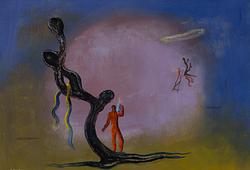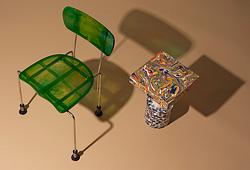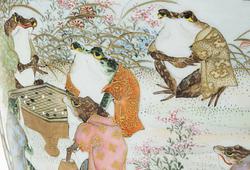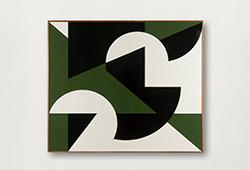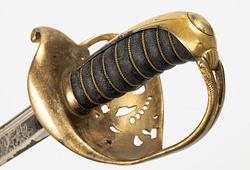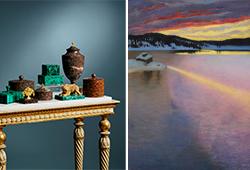After his music career, he studied metalwork at Konstfack (University of Arts, Crafts and Design), and continued his education at the Royal Institute of Art in Stockholm from 1962 to 1967. There, he became part of a dynamic artistic environment under professors such as Arne Jones, Åsmund Arle, and Bror Hjorth, alongside fellow students like Lena Cronqvist, Lars Hillersberg, and Ernst Nordin.
Keränen’s visual language evolved into a deeply personal expression. As critics Oscarsson, Bolter, and Ancker wrote in Dagens Nyheter in 2005:
“He developed the three-dimensional form with great confidence and sensitivity to spatial architecture. Sculpture was meant to do something to the room – more as an active participant in a shared space than as an isolated object. Balance and direction became as important as material and surface.”
His works clearly reflect the influence of European modernism, and he felt a strong artistic kinship with figures such as Constantin Brancusi, Giacometti, Jean Arp, and Matisse. At times, he lived and worked in France and Italy, where he found inspiration in both tradition and contemporary art.
One of his friends, art critic Thomas Millroth, described Keränen’s creative process as follows:
“Veikko Keränen sculpts by removing. Outside his studio, he showed me a fairly large piece of black diabase he had just begun to carve. ‘This one,’ he said, pointing, ‘I think will be about’—and then he mentioned the name of a jazz musician. I only saw the stone and the fresh tool marks, but he already saw what needed to be taken away so that what was hidden inside could emerge.”
Keränen created around thirty public sculptures across Sweden. His work is represented in several Nordic museums, including Moderna Museet in Stockholm, as well as in collections throughout Europe, Australia, and the United States.
After his death in 2004, his studio in Näsby Park was cleared. Since then, the sculptures have been stored in an untouched warehouse – a silent treasure of a lifetime’s artistic work. From this legacy, a curated selection has now been made for the current auction, spanning over forty years of creativity and bearing witness to an artist who consistently sought balance – between space and motion, between form and freedom.




